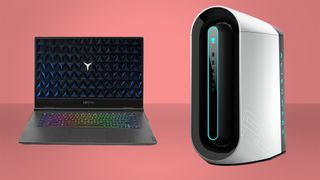Major chipmakers could weather neon shortages as result of war in Ukraine for 'two months or more'
Neon gas is a vital component in the laser lithography of silicon chips, and around 50% of the global supply came out of Ukraine.

Neon isn't just the gas that makes pretty signs, it's actually rather integral to the manufacturing of those little bits of processed silicon that make our PCs function. And two of the key producers of neon are based in Ukraine, which means that around half of the world's supply has vanished almost overnight because of the Russian invasion.
Neon is used in the lithography step where lasers are used to etch into otherwise pristine wafers of silicon, and Ingas and Cryoin, located in Mariupol and Odessa respectively, together accounted for between 45 and 54% of the supply for the semiconductor industry, according to an exclusive report by Reuters.
With these two firms closing down their operations that leaves a big hole in the supply chain, which could lead to further chip shortages if reserves run dry and alternative supplies can't be located. Taiwanese firms, such as TSMC, already have "safety stocks" of neon standing by, according to the Economy Ministry of Taiwan speaking to Reuters, and so do not anticipate any real impact on the global supply chain. But that's likely only in the short term.
Speaking with The Register, Intel has also largely dismissed what it is calling "a potential local interruption."
"Intel has assessed the possible impact of the conflict on Intel's supply chain," an Intel spokesperson says. "Intel's strategy of having a diverse, global supply chain minimizes its risk to potential local interruption. However, we are monitoring the situation carefully."
Market research firm, Techcet, provided Reuters with much of the data for its report, and its president has estimated that the larger semiconductor manufacturers will likely be able to cover the shortfall for an extended period of time, while smaller companies would bear the brunt of the supply chain disruptions.
"The largest chip fabricators, like Intel, Samsung and TSMC, have greater buying power and access to inventories that may cover them for longer periods of time, two months or more," says Lita Shon-Roy, president of Techcet. "However, many other chip fabs do not have this kind of buffer."
The biggest gaming news, reviews and hardware deals
Keep up to date with the most important stories and the best deals, as picked by the PC Gamer team.
Quite what will happen if the violence continues in Ukraine beyond that period is difficult to say. Reuters states that Cryoin could cope with a three month shutdown, according to staff, but if equipment is damaged it will be harder, and take longer to start up production again.

Best gaming PC: The top pre-built machines from the pros
Best gaming laptop: Perfect notebooks for mobile gaming
There is the possibility that other companies elsewhere could start up neon production, with China also a large producer of the vital gas. But it is estimated that it could take anywhere up to two years to ramp up production to cover the shortfall, and prices will continue to rise in the short term.
There is also the possibility that such companies may see the shortage as temporary and would be less willing to make the necessary startup investment under those circumstances.
For now, though, we won't feel the pinch of the neon shortage in an already constrained PC hardware environment, but the longer the war continues the more likely it is to add into the existing chip shortage. It may seem trite to be discussing supply chain issues as a byproduct of an invasion that is seeing civilians indiscriminately targeted by weapons of war, however, but it reinforces the point that Ukraine isn't some country bordering Russia which has no bearing on our lives, it is an important part of a global community.

Dave has been gaming since the days of Zaxxon and Lady Bug on the Colecovision, and code books for the Commodore Vic 20 (Death Race 2000!). He built his first gaming PC at the tender age of 16, and finally finished bug-fixing the Cyrix-based system around a year later. When he dropped it out of the window. He first started writing for Official PlayStation Magazine and Xbox World many decades ago, then moved onto PC Format full-time, then PC Gamer, TechRadar, and T3 among others. Now he's back, writing about the nightmarish graphics card market, CPUs with more cores than sense, gaming laptops hotter than the sun, and SSDs more capacious than a Cybertruck.
Most Popular





